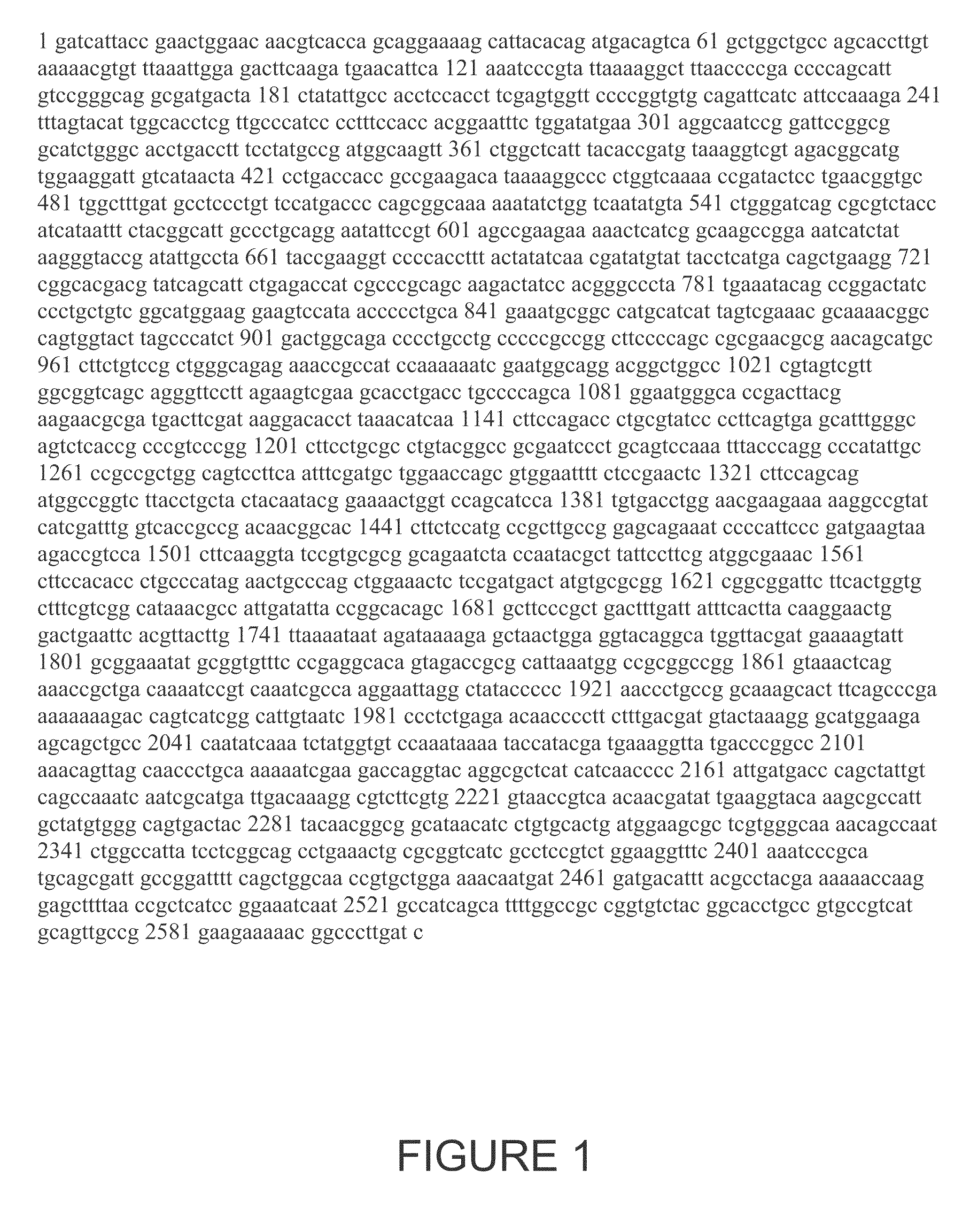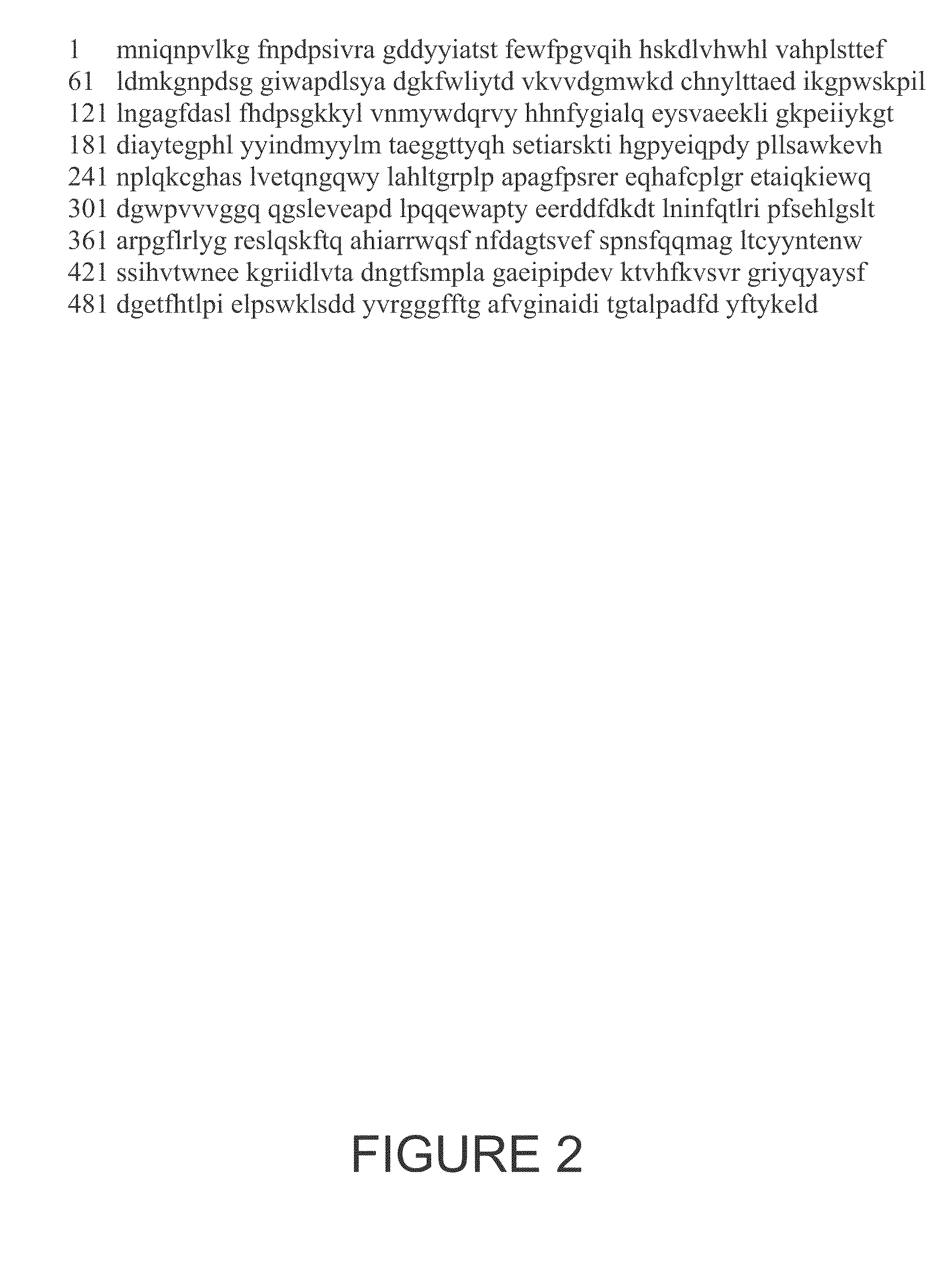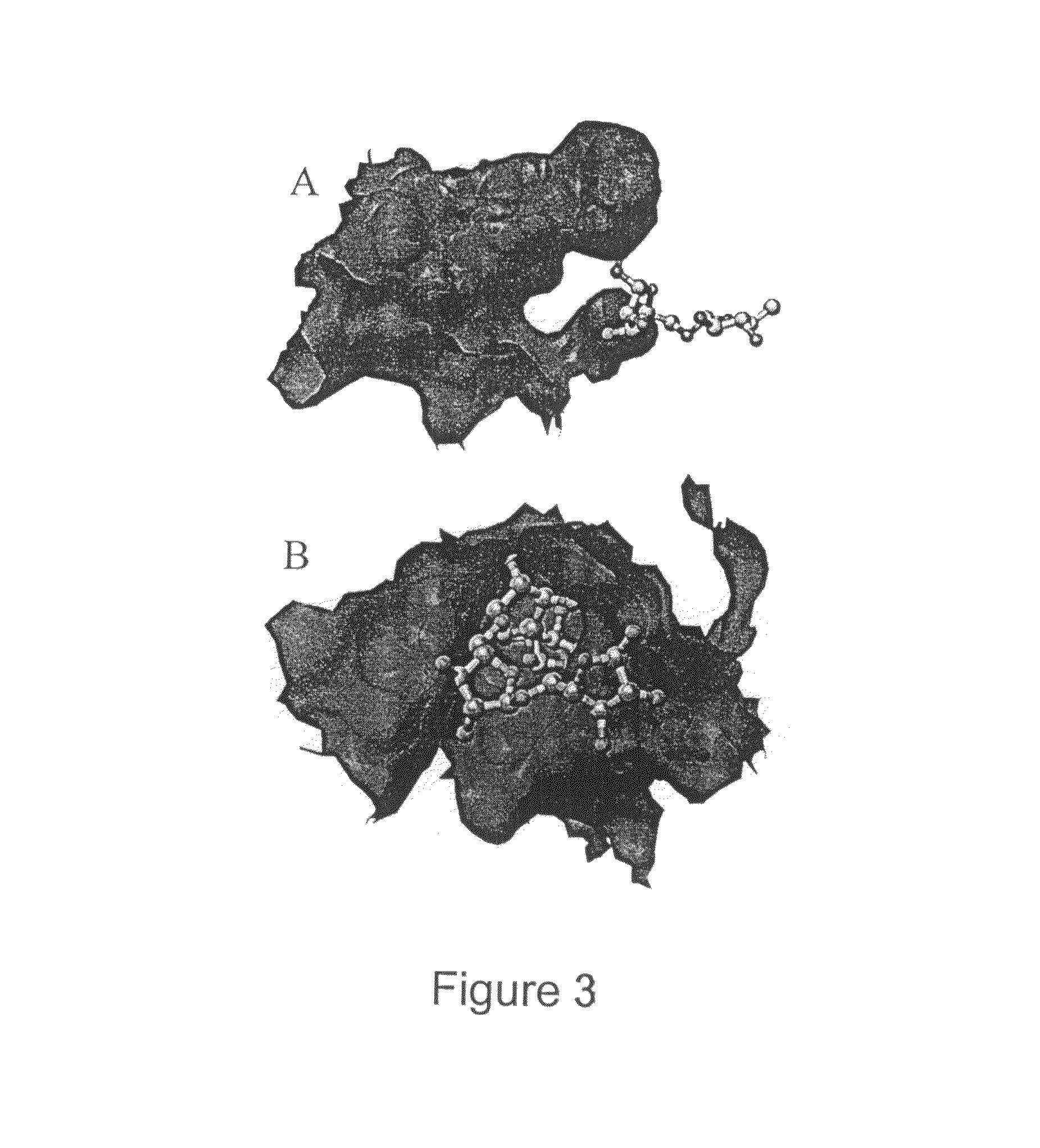Beta-xylosidase for conversion of plant cell wall carbohydrates to simple sugars
a technology of beta-xylosidase and plant cell wall carbohydrates, which is applied in the field of new process for hydrolyzing plant carbohydrates to xylose, can solve the problems of relative high cost of biomass sugar sources, and achieve the effect of high activity and stability
- Summary
- Abstract
- Description
- Claims
- Application Information
AI Technical Summary
Benefits of technology
Problems solved by technology
Method used
Image
Examples
example 1
Materials and General Methods
[0096]Buffers, 4-nitrophenol (4NP), 4NP glycosides, and D-xylose (X1) were obtained from Sigma-Aldrich. 1,4-β-D-Xylobiose (X2), 1,4-β-D-xylotriose (X3), 1,4-β-D-xylotetraose (X4), 1,4-β-D-xylopentaose (X5), 1,4-β-D-xylohexaose (X6), and 1,5-α-L-arabinobiose (A2) were from Megazyme. 4-Nitrophenyl-β-D-xylobioside (4NPX2) was a generous gift from Dr. Peter Biely. Water was purified through a Milli-Q unit (Millipore). All other reagents were reagent grade and high purity. Kinetic viscosity measurements were made at 25° C. using a Cannon-Fenske tube (Kimble); rates of sucrose solutions were divided by rates of water to yield relative viscosity (η / ηo). A Cary 50 Bio UV-Visible spectrophotometer (Varian), equipped with a thermostatted holder for cuvettes, was used for spectral and kinetic determinations. A model SX.18MV-R stopped-flow (Applied Photophysics) was used for rapid kinetic studies. Kinetic simulations were through the computer program KINSIM: Chemica...
example 2
Materials and General Methods
[0133]The gene encoding β-xylosidase from S. ruminantium GA192 was cloned and expressed in Escherichia coli as described (Whitehead and Cotta, 2001, ibid). SXA, produced in E. coli, was purified to homogeneity, as judged from SDS-PAGE analysis, by using reverse phase and anionic exchange chromatography steps. Concentrations of homogeneous SXA monomers (active sites) were determined by using an extinction coefficient at 280 nm of 129600 M−1 cm−1, calculated from amino acid composition (Gill and von Hippel, 1989, ibid). N-terminal Edman sequencing was conducted by the Wistar Proteomics Facility (Philadelphia, Pa.). Buffers and 4-nitrophenyl-β-D-xylopyranoside (4NPX) were obtained from Sigma-Aldrich (St. Louis, Mo.). All other reagents were reagent grade and high purity. A Cary 50 Bio UV-Visible spectrophotometer (Varian; Palo Alto, Calif.), equipped with a thermostatted holder for cuvettes, was used for spectral and kinetic determinations. Delta extinction...
example 3
Materials and Methods
Materials and General Methods
[0151]Buffers, 4-nitrophenol (4NP), 4-nitrophenyl-β-D-xylopyranoside (4NPX), 4-nitrophenyl-α-L-arabinofuranoside (4NPA), and D-xylose (X1) were obtained from Sigma-Aldrich (St. Louis, Mo.). 1,4-β-D-Xylobiose (X2), 1,4-β-D-xylotriose (X3), 1,4-β-D-xylotetraose (X4), 1,4-β-D-xylopentaose (X5), and 1,4-β-D-xylohexaose (X6) were from Megazyme (Wicklow, Ireland). Water was purified through a Milli-Q unit (Millipore; Billerica, Mass.). All other reagents were reagent grade and high purity. The gene encoding β-xylosidase from S. ruminantium GA192 was cloned and expressed in Escherichia coli as described (Whitehead and Cotta, 2001, ibid). SXA, produced in E. coli, was purified to homogeneity, as judged from SDS-PAGE analysis, by using reverse phase and anionic exchange chromatography steps as described (Example 1, also published as Jordan, D. B., Li, X-L., Dunlap, C. A., Whitehead, T. R., and Cotta, M. A. (2007), Appl. Biochem. Biotechnol. 1...
PUM
| Property | Measurement | Unit |
|---|---|---|
| temperature | aaaaa | aaaaa |
| pH | aaaaa | aaaaa |
| time | aaaaa | aaaaa |
Abstract
Description
Claims
Application Information
 Login to View More
Login to View More - R&D
- Intellectual Property
- Life Sciences
- Materials
- Tech Scout
- Unparalleled Data Quality
- Higher Quality Content
- 60% Fewer Hallucinations
Browse by: Latest US Patents, China's latest patents, Technical Efficacy Thesaurus, Application Domain, Technology Topic, Popular Technical Reports.
© 2025 PatSnap. All rights reserved.Legal|Privacy policy|Modern Slavery Act Transparency Statement|Sitemap|About US| Contact US: help@patsnap.com



